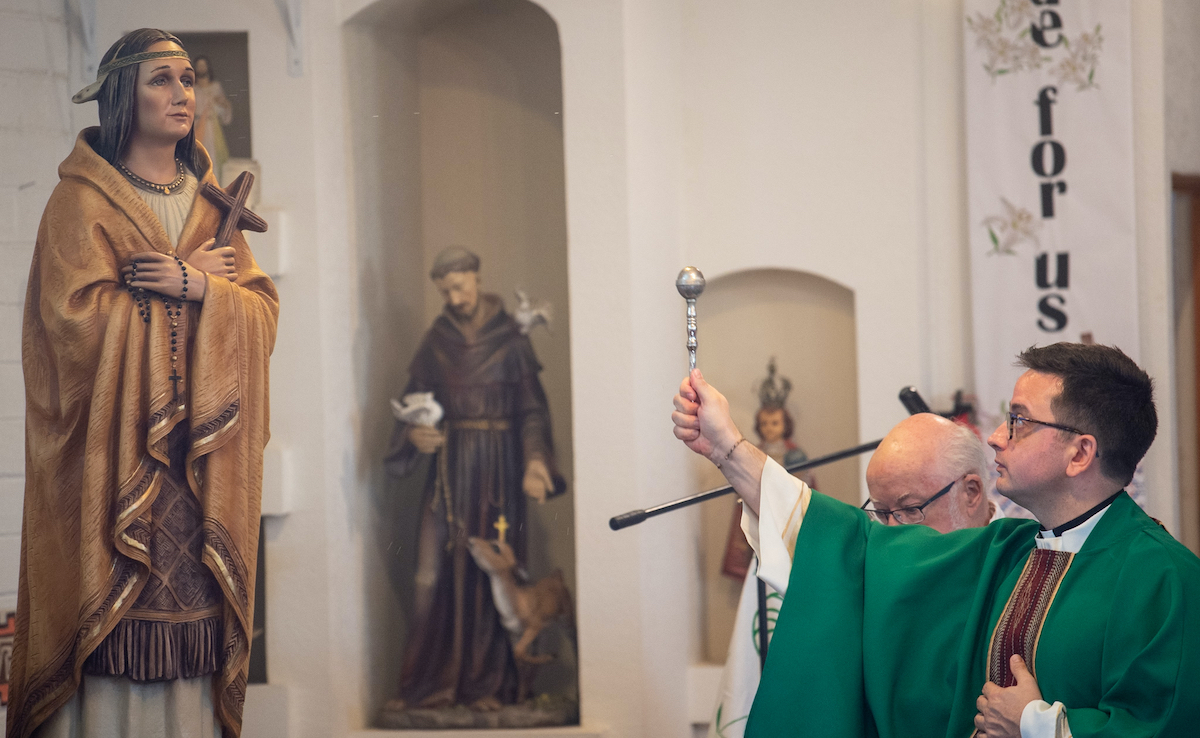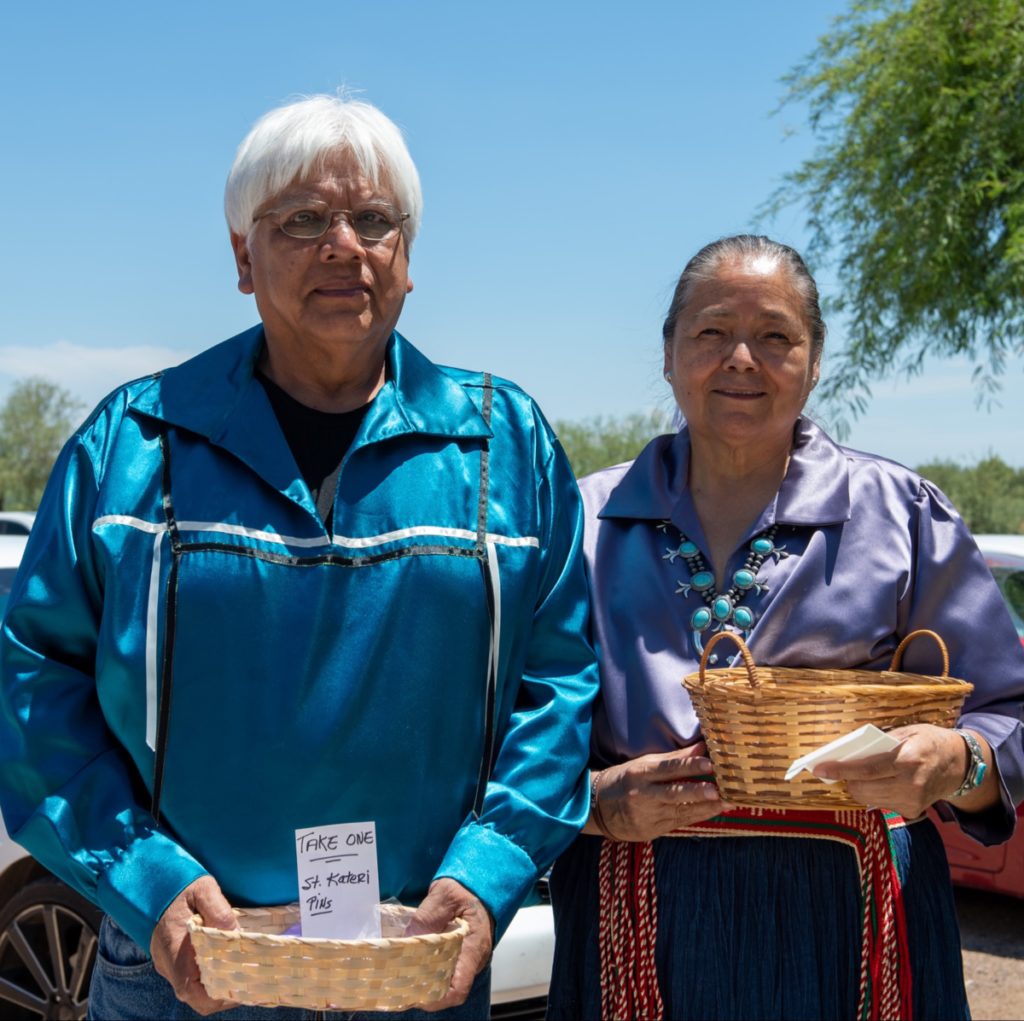
(Brett Meister | The Catholic Sun)
By Jeff Grant, The Catholic Sun
SCOTTSDALE — A representative of the papal ambassador to the United States has paid two visits to the Diocese of Phoenix’s Native American missions.
Msgr. Luca Caveada, the secretary to the Apostolic Nunciature in the United States of America, celebrated Mass at St. John the Baptist Church in Laveen Saturday, July 30, and at St. Francis of Assisi Mission in Scottsdale Sunday, July 31.
Msgr. Caveada was in the greater Phoenix area for the installation of the Most Rev. John P. Dolan as the diocese’s fifth bishop on Tuesday, Aug. 2. As representative of the Apostolic Nuncio to the United States, Msgr. Caveada read from the official papal document declaring Dolan the Ordinary of the diocese.
The Masses in Laveen and Scottsdale were part of a special celebration of St. Kateri Tekakwitha, whose Feast Day is July 14.
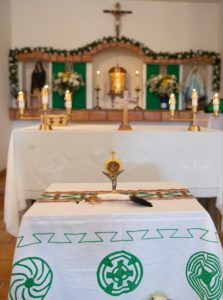

(Brett Meister | The Catholic Sun)
The first Native American to be named a Catholic saint, Kateri’s feast day is recognized annually by the diocese. But Msgr. Caveada told the fifty or so worshippers at St. Francis that his visit was about more than honoring the venerable, “Lily of the Mohawks.”
“I am here also because I am curious to understand how the Lord grows and feeds His Church through your culture,” he said during his homily.
“It is a blessing to see how the Church lives, and how living and fruitful is the Church. Through the Church, we recognize the Risen Lord. Thank you for giving me this chance to be with you,” he said.
Worshippers from the Native American community were gratified.
“It speaks volumes for Rome to be here with us on this day,” said Joe Enos.
“It’s tremendous,” said Classene Lewis, a member of the Fort McDowell Yavapai Nation, about 25 miles northeast of Phoenix. Lewis said she travels regularly to worship at St. Francis.
Msgr. Caveada’s stay in the Phoenix area began a day after Pope Francis concluded a 5-day visit to Canada, which he described as “a penitential trip” to meet with, listen to and apologize to members of Canada’s First Nation, Métis, and Inuit communities, especially those who experienced abuse or attempts at forced assimilation of Native peoples at Church-run residential schools.
The Arizona visit by Msgr. Caveada represented “a sincere effort by the Vatican to reach out and make a connection [with the Native peoples],” said Dcn. James Trant, Parish Life Coordinator for the Diocese of Phoenix’s Native American Ministry, part of the Ethnic Ministries Office.
“We’re just overjoyed. I was really impressed by the fact he wanted to do almost what Pope Francis is doing in Canada. They, as a staff, wanted to reach out to Native American communities and other minority communities. The reason [Msgr. Caveada] came a couple of days in advance [of the Bishop’s installation] was to spend some serious time at these missions,” said Dcn. Trant.
Msgr. Caveada also went to St. Anthony Mission in Sacaton and met with the Franciscan Sisters of Christian Charity, who serve St. Peter Indian Mission Catholic School in Bapchule.
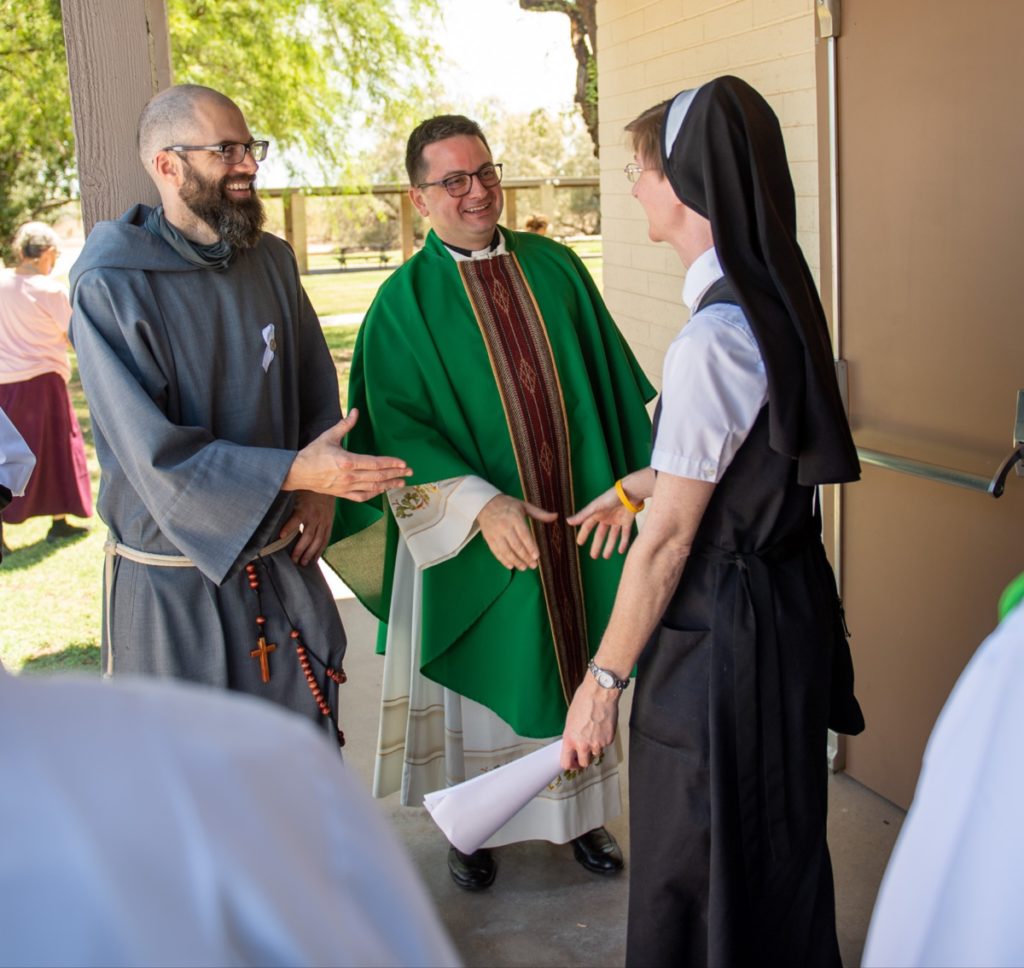

The Franciscan Friars of the Holy Spirit, based at St. John the Baptist Parish, serve the Native American communities of the Diocese of Phoenix, including the Gila River, Salt River, and Ak-Chin reservations, and the San Lucy District of the Tohono O’odham Nation. Fr. Antony Tinker, the Friars community servant, said social challenges faced by Native Americans are similar to those faced by wider society.
“Our goal is to make saints, bring people to Jesus, moving [them] into a deeper love for the Church, the Eucharist, and the Sacraments. We want to draw people together, show each other love for one another: Love God above all else; love your neighbor as yourself. Let the Greatest Commandment pour forth. Bring people into healing from trauma, from grace into the Sacraments, and be filled with the Holy Spirit,” he said.
There are likely few examples better than the woman celebrated July 30-31.
Beatified by Pope John Paul II in 1980 and canonized by Pope Benedict XVI on Oct. 21, 2012, St. Kateri Tekakwitha lived a life of holiness and virtue, despite obstacles and opposition within her tribe. Born in 1656, she spent much of her short life in the Adirondack Mountain region of upstate New York. Stricken by smallpox at age 4, she lost both parents and her only brother to the disease, which also left her weakened, scarred, and partially blind. She was adopted by her aunts and an uncle, a tribal chief. Her family even planned marriage for Kateri. But the violence and debauchery of her Mohawk village led Kateri to flee to a town near Montreal, Canada, where she grew in holiness and devotion to the Blessed Sacrament. Eventually, she professed a vow of chastity, the crowning step in a life known for its godly spirit, prayer, and even her self-inflicted wounds of penances.
The “Lily of the Mohawks” died at age 24 and, moments afterward, witnesses reported seeing the scars from smallpox completely vanish and her face take on a glow of radiant beauty.
While Msgr. Caveada did not discuss St. Kateri’s life in his July 31 homily, he did talk about living devoted to God, asking the congregation several questions.
“Are we consistent according to our spiritual life? What is our treasure? Do we want just to possess, to grab at richness, or do we want to follow the Lord? Do I want to acknowledge the Lord’s primacy? Do we ask for no more than our daily bread?”
Later, congregants cited St. Kateri’s example.
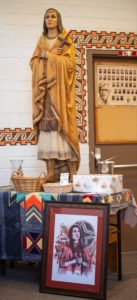

“She’s a model of charity, hope, definitely a model of faith,” said Classene Lewis. “I think that is relative today because [in] so many of our tribes, I find there is a revitalization of Native beliefs and ceremonies. Many young people are returning to their roots,” she said.
Dcn. Trant noted Kateri’s sacrifices.
“It was a big thing in those days — as it would be now — for someone to break away from their tribe, their clan, and all their family connections. I’m always amazed at the connection so many of the Native people make with her. She really does bring Christ to the people. Her life was not focused on herself. It was focused on the Eucharist, the rosary, our Blessed Mother,” he said.
“Having a saint and a mission of the same culture helps laity make that connection with the Catholic faith. It’s very ideal for accepting other cultures and other people, just as we did today through the foods, rituals, and prayers.”
Lewis hopes the Church will continue to promote Native religious communities and events.
“For so long, we have been a forgotten people,” she said.



